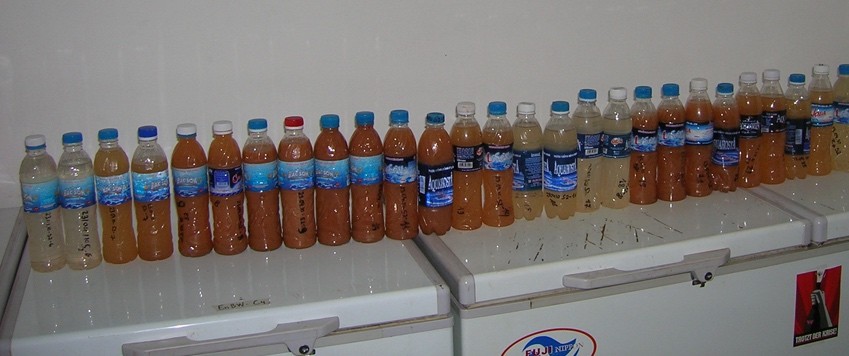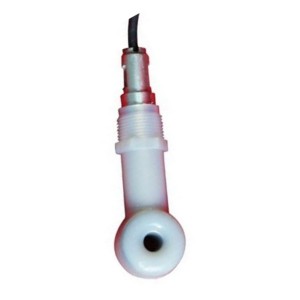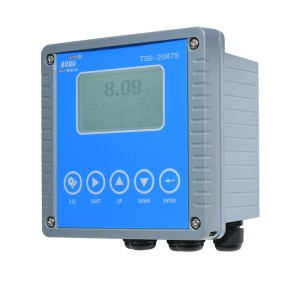What Is Turbidity?
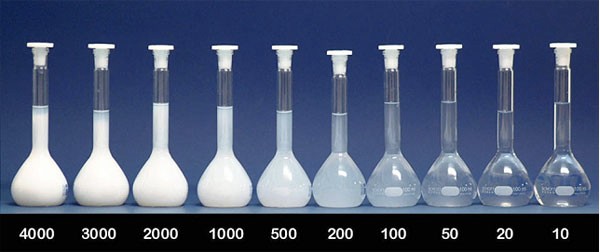
Turbidity is a measure of the cloudiness or haziness of a liquid, commonly employed to assess water quality in natural water bodies—such as rivers, lakes, and oceans—as well as in water treatment systems. It arises due to the presence of suspended particles, including silt, algae, plankton, and industrial byproducts, which scatter light passing through the water column.
Turbidity is typically quantified in nephelometric turbidity units (NTU), with higher values indicating greater water opacity. This unit is based on the amount of light scattered by the particles suspended in the water, as measured by a nephelometer. The nephelometer shines a beam of light through the sample and detects the light that is scattered by the suspended particles at a 90-degree angle. Higher NTU values indicate greater turbidity, or cloudiness, in the water. Lower NTU values indicate clearer water.
For example:Clear water might have an NTU value close to 0.Drinking water, which needs to meet safety standards, typically has an NTU of less than 1.Water with high levels of pollution or suspended particles can have NTU values that are in the hundreds or thousands.
Why measure the turbidity of water quality?
Elevated turbidity levels can lead to several adverse effects:
1)Reduced light penetration: This impairs photosynthesis in aquatic plants, thereby disrupting the broader aquatic ecosystem that depends on primary productivity.
2)Clogging of filtration systems: Suspended solids may obstruct filters in water treatment facilities, increasing operational costs and reducing treatment efficiency.
3)Association with pollutants: Turbidity-causing particles often serve as carriers for harmful contaminants, such as pathogenic microorganisms, heavy metals, and toxic chemicals, posing risks to both environmental and human health.
In summary, turbidity serves as a critical indicator for evaluating the physical, chemical, and biological integrity of water resources, particularly within environmental monitoring and public health frameworks.
What is the principle of turbidity measurement?
The principle of turbidity measurement is based on the scattering of light as it passes through a water sample containing suspended particles. When light interacts with these particles, it is scattered in various directions, and the intensity of the scattered light is directly proportional to the concentration of particles present. A higher particle concentration results in increased light scattering, leading to greater turbidity.

the principle of turbidity measurement
The process can be broken down into the following steps:
Light Source: A beam of light, typically emitted by a laser or LED, is directed through the water sample.
Suspended Particles: As the light propagates through the sample, suspended matter—such as sediment, algae, plankton, or pollutants—causes the light to scatter in multiple directions.
Detection of Scattered Light: A nephelometer, the instrument used for turbidity measurement, detects the light scattered at a 90-degree angle relative to the incident beam.This angular detection is the standard method due to its high sensitivity to particle-induced scattering.
Measurement of Scattered Light Intensity: The intensity of the scattered light is quantified, with higher intensities indicating a greater concentration of suspended particles and, consequently, higher turbidity.
Turbidity Calculation: The measured scattered light intensity is converted into Nephelometric Turbidity Units (NTU), providing a standardized numerical value that represents the degree of turbidity.
What measures the turbidity of water?
Measuring water turbidity using optical-based turbidity sensors is a widely adopted practice in modern industrial applications. Typically, a multifunctional turbidity analyzer is required to display real-time measurements, enable periodic automatic sensor cleaning, and trigger alerts for abnormal readings, thereby ensuring compliance with water quality standards.
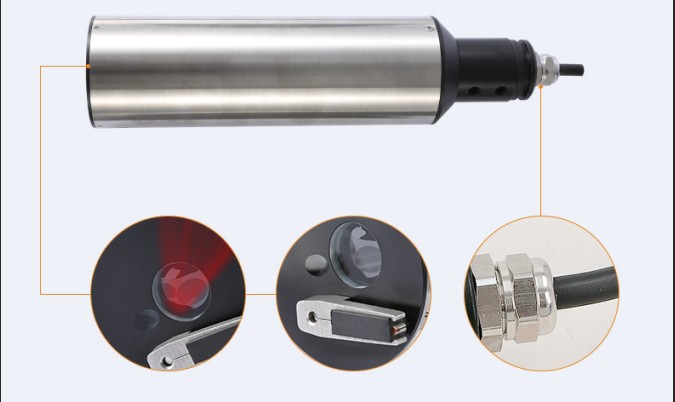
Online Turbidity Sensor (Measurable seawater)
Different operational environments necessitate distinct turbidity monitoring solutions. In residential secondary water supply systems, water treatment plants, and at the inlet and outlet points of potable water facilities, low-range turbidity meters with high precision and narrow measurement ranges are predominantly employed. This is due to the stringent requirement for low turbidity levels in these settings. For example, in most countries, the regulatory standard for tap water at treatment plant outlets specifies a turbidity level below 1 NTU. Although swimming pool water testing is less common, when conducted, it also demands very low turbidity levels, typically requiring the use of low-range turbidity meters.

low-range Turbidity Meters TBG-6188T
In contrast, applications such as wastewater treatment plants and industrial effluent discharge points require high-range turbidity meters. Water in these environments often exhibits significant turbidity fluctuations and may contain substantial concentrations of suspended solids, colloidal particles, or chemical precipitates. Turbidity values frequently exceed the upper measurement limits of ultra-low-range instruments. For instance, influent turbidity at a wastewater treatment plant can reach several hundred NTU, and even after primary treatment, monitoring of turbidity levels in the tens of NTU remains necessary. High-range turbidity meters commonly operate on the principle of scattered-to-transmitted light intensity ratio. By employing dynamic range expansion techniques, these instruments achieve measurement capabilities from 0.1 NTU to 4000 NTU while maintaining an accuracy of ±2% of full scale.
 Industrial On-line Turbidity Analyzer
Industrial On-line Turbidity Analyzer
In specialized industrial contexts, such as the pharmaceutical and food and beverage sectors, even greater demands are placed on the accuracy and long-term stability of turbidity measurements. These industries often utilize dual-beam turbidity meters, which incorporate a reference beam to compensate for disturbances caused by light source variations and temperature fluctuations, thus ensuring consistent measurement reliability. For example, the turbidity of water for injection must typically be maintained below 0.1 NTU, imposing rigorous requirements on instrument sensitivity and interference resistance.
Furthermore, with the advancement of Internet of Things (IoT) technology, modern turbidity monitoring systems are increasingly becoming intelligent and networked. Integration of 4G/5G communication modules enables real-time transmission of turbidity data to cloud platforms, facilitating remote monitoring, data analytics, and automated alert notifications. For instance, a municipal water treatment plant has implemented an intelligent turbidity monitoring system that links outlet turbidity data with its water distribution control system. Upon detection of abnormal turbidity, the system automatically adjusts chemical dosing, resulting in an improvement in water quality compliance from 98% to 99.5%, along with a 12% reduction in chemical consumption.
Is turbidity the same concept as total suspended solids?
Turbidity and Total Suspended Solids (TSS) are related concepts, but they are not the same.Both refer to particles suspended in water, but they differ in what they measure and how they are quantified.
Turbidity measures the optical property of water, specifically how much light is scattered by suspended particles.It doesn’t directly measure the amount of particles, but rather how much light is blocked or deflected by those particles.Turbidity is affected not only by the concentration of particles but also by factors like the size, shape, and color of the particles, as well as the wavelength of light used in measurement.

Industrial Total Suspended Solids (TSS) Meter
Total Suspended Solids (TSS) measures the actual mass of suspended particles in a sample of water.It quantifies the total weight of the solids that are suspended in the water, regardless of their optical properties.
TSS is measured by filtering a known volume of water through a filter (usually a filter with a known weight).After the water is filtered, the solids left on the filter are dried and weighed.The result is expressed in milligrams per liter (mg/L).TSS is directly related to the amount of suspended particles, but does not give information about the particle size or how the particles scatter light.
Key Differences:
1)Nature of Measurement:
Turbidity is an optical property (how light is scattered or absorbed).
TSS is a physical property (the mass of particles suspended in water).
2)What They Measure:
Turbidity gives an indication of how clear or murky the water is, but doesn’t give an actual mass of solids.
TSS provides a direct measurement of the amount of solids in the water, regardless of how clear or murky it looks.
3)Units:
Turbidity is measured in NTU (Nephelometric Turbidity Units).
TSS is measured in mg/L (milligrams per liter).
Are color and turbidity the same?
Color and turbidity are not the same, though both affect the appearance of water.

Water Quality Online Color Meter
Here’s the difference:
Color refers to the hue or tint of the water caused by dissolved substances, such as organic matter (like decaying leaves) or minerals (like iron or manganese).Even clear water can have color if it contains dissolved colored compounds.
Turbidity refers to the cloudiness or haziness of water caused by suspended particles, such as clay, silt, microorganisms, or other fine solids.It measures how much the particles scatter light passing through the water.
In short:
Color = dissolved substances
Turbidity = suspended particles
Post time: Nov-12-2025

